Rize (PG-13) ★★★½
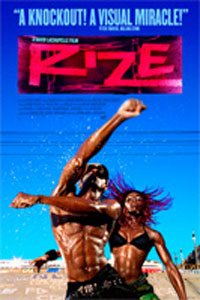 Hipsters have been clued in since Sundance 2005. But for the rest of us, Rize, an indie documentary about dance on the poor streets of South L.A., might have appeared at first glance, well, vague. It's not. Amplified by a slick, infectious soundtrack, Rize (directed by celebrity photographer David LaChapelle) paints a loving visual picture of modern-day hip-hop, specifically the post-2000 dance trends of ''krumping'' and ''clowning.''
Hipsters have been clued in since Sundance 2005. But for the rest of us, Rize, an indie documentary about dance on the poor streets of South L.A., might have appeared at first glance, well, vague. It's not. Amplified by a slick, infectious soundtrack, Rize (directed by celebrity photographer David LaChapelle) paints a loving visual picture of modern-day hip-hop, specifically the post-2000 dance trends of ''krumping'' and ''clowning.''
Story
Beginning in 1992, after L.A.'s Rodney King riots, a reformed ex-convict named Tommy Johnson, needing a job, grabbed a boom box, some face paint, and a clown suit. Bizarre, yes. But he started a successful kids' party business, dancing in the riot-ravaged areas. Before he knew it, Johnson--who named himself Tommy the Clown--started a ghetto-wide trend of ''clowning,'' and later, ''krumping,'' both characterized by quick, sudden dance moves. Rize is about more than just Tommy the Clown, of course. It's about race and oppression in America, and the therapeutic effect of dance throughout the centuries. The film attempts to channel the human spirit through physical expression, as the real-life faces give Rize extra needed impact to the oppressive story--one, unfortunately, that is all too familiar.
Acting
The real-life street dancers infuse the documentary. They are, essentially, characters, with alter-ego names like Dragon, Miss Prissy and El Nino. Decorated in face paint, they are average, real South L.A. ''hood'' residents with average jobs. Larry, for example, still works at Abercrombie & Fitch. But boy, they can dance. LaChapelle's visual storytelling elevates them to iconic, actor-like character status. More gravely, however, the dancers' belonging to clown or krump crews often substitute gang affiliation in the bombed-out neighborhoods. Rize works because of its ''acting,'' the vibrancy and timelessness of its characters' spirits.
Direction
Paris Hilton and Pamela Anderson's good friend David LaChapelle directs his first feature, after he released a similar short film, Krumped, last year. His celebrity portraits have graced Vanity Fair and Interview magazines since the '80s. We last saw LaChapelle on the police blotter in January, getting arrested for disorderly conduct. Utah police allege LaChapelle, who was partying with Hilton and Anderson at Sundance where Rize premiered, became physically and verbally abusive when separated from the starlets. The case isn't settled yet. But in light of these charges, it could be LaChapelle's ability to bull his way through filming, glossing over themes quickly, that gives Rize its broad-brush impact. LaChapelle offers a different documentary in the post-Michael Moore era--one without a political point of view or wry scrutiny of shady characters. Instead, LaChapelle (who apprenticed under Andy Warhol) sees himself more as an artist. With Rize, he's molded an artistic topical statement, a timely bull's eye of hip-hop and Blue State progressivism. The filmmaker trains the audience's eye, quickly, to become hypnotized in the dancers' bodies and to seek higher meaning.
Bottom Line
Rize is an 85-minute head-nodding maelstrom of pent-up human energy, bustin' to get out. Its larger themes are mostly effective, if familiar. See it for an appreciation of not only music, but the resiliency and sensitivity of the human spirit.
To get the full Quicklook Films experience, uncheck "Enable on this Site" from Adblock Plus
box office top 10

Kingdom of the Planet of the Apes Released: May 10, 2024 Cast: Owen Teague, Freya Allan 56.5M
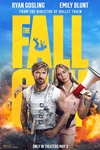
The Fall Guy Released: May 3, 2024 Cast: Ryan Gosling, Emily Blunt 13.7M

Challengers Released: April 26, 2024 Cast: Zendaya, Josh O'Connor 4.7M
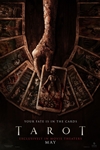
Tarot Released: May 3, 2024 Cast: Harriet Slater, Adain Bradley 3.5M

Godzilla x Kong: The New Empire Released: March 29, 2024 Cast: Rebecca Hall, Brian Tyree Henry 2.5M

Unsung Hero Released: April 26, 2024 Cast: Daisy Betts, Joel Smallbone 2.3M

Kung Fu Panda 4 Released: March 8, 2024 Cast: Jack Black, Awkwafina 2M
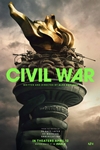
Civil War Released: April 12, 2024 Cast: Kirsten Dunst, Wagner Moura 1.8M

Star Wars Episode 1 The Phantom Menace 25th Anniversary Released: May 3, 2024 Cast: Ewan McGregor, Liam Neeson 1.5M
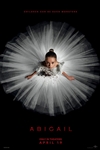
Abigail Released: April 19, 2024 Cast: Melissa Barrera, Dan Stevens 1.1M






